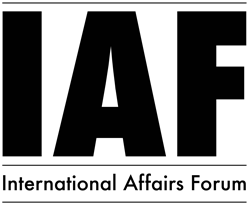| Sat. May 24, 2025 |
 |
|
||
|
||||
| ||||

On February 1st, 2021, Myanmar’s military staged a coup, overthrowing the newly re-elected State Counsellor, Aung San Suu Kyi, along with the government she led. For decades, Aung San Suu Kyi was considered a symbol of hope for Myanmar as she fought for democracy and an end to the formal military rule that had been holding onto power for over half a century through means of fear, censorship, and human rights violations (Pletcher). The coup d’état sparked a civil war between the strict military junta and resistance groups, triggering widespread violence and protests. As a result, Myanmar’s children have become the most vulnerable victims of this crisis, facing forced military recruitment, harsh labor conditions, mass displacement, and lack of access to healthcare and education. The ongoing conflict in Myanmar has made it nearly impossible for its children to have a secure future, highlighting the urgent need for systemic reform and international intervention going into 2025.
One of the most alarming human rights violations in Myanmar is the continued use of children in armed conflict. Despite ratifying the Convention on the Rights of the Child in 1991 and a Child Rights Law in 2019, Myanmar’s militia and ethnic resistance groups, including the Kachin Independence Army, the Karen National Liberation Army, and the Arakan Army, have continually violated these laws (Li). According to a United Nations report, the Myanmar junta has recruited nearly 2,000 children under the age of eighteen since the coup in 2021 (Mizzima). Reports suggest that at least 20% of all new military recruits in some regions are underage (Cadena). These children are often deceived with false promises of financial support for their families or are threatened with imprisonment if they refuse to join (Yi). Once recruited, child soldiers undergo brutal training that includes extreme malnourishment, exhausting labor, and the constant threat of death (United Nations Office on Children and Armed Conflict). While Myanmar does this to a greater extent, resistance groups and ethnic armed organizations still admit that children want to fight for democracy in their country. Many of these child soldiers range in age from 12 to 17, with thousands actively fighting (Human Rights Watch). The increasing number of children involved in armed conflict emphasizes the need for urgent action to protect future generations in Myanmar.
In February 2024, Myanmar reinstated the People’s Military Service Law, a rule making military conscription mandatory for young adults. With this law enacted, thousands of working adults were removed from the labor force, resulting in an increased reliance on children as a source of income for struggling families. The International Labour Organization previously reported that over 1.1 million children in Myanmar were engaged in child labor, but this number is now growing as forced conscription worsens economic hardship (International Labour Organization). According to Ma Ei, the co-secretary of the Federation of General Workers Myanmar, this child labor is often extremely exploitive, with many laborers facing issues like “unpaid overtime, termination after completing critical orders, or dismissal for removing overtime” (Hlaing). The enforcement of the conscription law has also led to increased trafficking and exploitation, as reports indicate a 77% increase in child labor rates in conflict-affected areas since 2021 (United Nations Myanmar). Children work in hazardous conditions such as dangerous mineral mining and sweatshops, where they often face physical abuse and sexual exploitation (Augustus). With no means to survive, these children are trapped in cycles of exploitation, poverty, and the loss of their childhoods. Without intervention and systemic change in 2025, Myanmar’s children will continue to suffer under the burdens of a war they had no part in creating.
Growing up in a war-torn society, Myanmar’s children are experiencing extreme violence, loss, and psychological trauma. Many have witnessed the murder of family members, the destruction of homes, and the disintegration of their communities. The psychological toll on these children is immense, with many suffering from mental health conditions such as PTSD, depression, and anxiety (Parvin). According to the United Nations Children’s Fund (UNICEF), the ongoing conflict in Myanmar has displaced more than 3.4 million people, with children making up a significant portion of this population. Many families have been forced to flee their homes due to military airstrikes, massacres, and forced evictions. Displaced children are often sent to overcrowded refugee camps where clean water, food, and healthcare are scarce (UNICEF). The military coup has also devastated Myanmar’s education and healthcare system. Schools have been bombed or forced to shut down due to instability. According to UNICEF, over 5 million children are missing out on education, and over 1 million are missing out on necessary vaccines, making Myanmar a global hotspot for “zero-dose” children. Without schooling and adequate healthcare, Myanmar’s children continue to be at risk for poverty, exploitation, and death.
As Myanmar enters 2025, the situation for its children remains dire, with little sign of relief from conflict, forced labor, and displacement. The military junta’s grip on power continues to fuel economic hardship and human rights abuse, leaving children increasingly vulnerable. To break this cycle, the international community must take a stronger stance against the junta and increase humanitarian aid, particularly for children. Additionally, essential services such as food, water, healthcare, and psychological support must be given to displaced families. Education programs should also be prioritized to ensure that children have the opportunity to learn and break cycles of poverty. Furthermore, expanding support for local resistance groups and community-led initiatives can help protect children and provide vital services. Global organizations must work alongside these groups to ensure that children are not recruited into conflict and that economic support is provided to prevent child labor. Finally, diplomatic pressure must also be applied to create a ceasefire agreement and, at last, end the longest civil war in history. Compared to other global crises, Myanmar’s child rights violations stand among the worst, with one of the highest percentages of child soldiers and displaced minors. Without urgent intervention rooted in humanitarian aid, education, legal reform, and diplomatic action, Myanmar’s children will remain trapped amid exploitation and war.
Claire Baxendale is a freshman at Marquette University, majoring in Social Welfare and Justice with a minor in Public Policy. Originally from St. Louis, MO, she is passionate about human rights, social justice, and policy reform. She plans to attend law school after completing her undergraduate studies, with the goal of advocating for marginalized communities and implementing systemic change.
Bibliography
Augustus, Alyssa. “Child Labor in Myanmar.” Ballard Brief, Ballard Brief, 11 Mar. 2022, ballardbrief.byu.edu/issue-briefs/child-labor-in-myanmar.
Cadena, Carolina. “History of Child Soldiers in Myanmar.” The Borgen Project, Jennifer Philipp https://borgenproject.org/wp-content/uploads/logo.jpg, 26 Aug. 2021, borgenproject.org/child-soldiers-in-myanmar/?utm.
Hlaing, Thazin. “Minors Make up for Labor Shortage Caused by Myanmar’s Conflict, Draft.” Radio Free Asia, RFA Burmese, 24 July 2019, www.rfa.org/english/news/myanmar/child-labor-ilo-military-draft-07192024145315.html.
Human Rights Watch. “‘My Gun Was as Tall as Me’: Child Soldiers in Burma.” Refworld, 16 Oct. 2002, www.refworld.org/reference/countryrep/hrw/2002/en/20503.
International Labour Organization. “Myanmar Programme on the Elimination of Child Labour (My-PEC).” ILO, 23 Apr. 2024, pp. 1–11.
Li, Yiwen. “The Child Soldiers of Myanmar.” The Upstream Journal , Human Rights Magazine, 21 Aug. 2024, upstreamjournal.org/myanmar-child-soldiers/.
Mizzima. “Myanmar Military Recruits Nearly 2,000 Child Soldiers since 2021 Coup.” ENG.MIZZIMA.COM, Mizzima: News from Myanmar, 24 Nov. 2024, eng.mizzima.com/2024/11/24/16609?utm_source.
Parvin, N. Mental Health Condition of the Children In Humanitarian Crisis: A Study In Rohingya Kutupalong Camp. J Neuro Neurophysiol 2023, 14 (3), 001-005
Pletcher, Kenneth. “Aung San Suu Kyi.” Encyclopædia Britannica, Encyclopædia Britannica, inc., 30 Mar. 2025, www.britannica.com/biography/Aung-San-Suu-Kyi.
UNICEF. “Urgent Need to Protect Children amid Escalating Conflict in Myanmar.” UNICEF: For Every Child, 21AD, www.unicef.org/press-releases/urgent-need-protect-children-amid-escalating-conflict-myanmar.
United Nations Children’s Fund, UNICEF Global Annual Results Report 2023, UNICEF, New York, August 2024. © United Nations Children’s Fund (UNICEF) August 2024
United Nations Myanmar. “Urgent Action Needed to Protect Children from Child Labour amid Rising Security Concerns in Myanmar.” United Nations , United Nations, 12 June 2024, myanmar.un.org/en/271411-urgent-action-needed-protect-children-child-labour-amid-rising-security-concerns.
United Nations Myanmar. Office of the Special Representative of the Secretary-General for Children and Armed Conflict, United Nations, childrenandarmedconflict.un.org/where-we-work/myanmar/. Accessed 31 Mar. 2025.
| Comments in Chronological order (0 total comments) | |
| Report Abuse |
| Contact Us | About Us | Donate | Terms & Conditions |
|
All Rights Reserved. Copyright 2002 - 2025